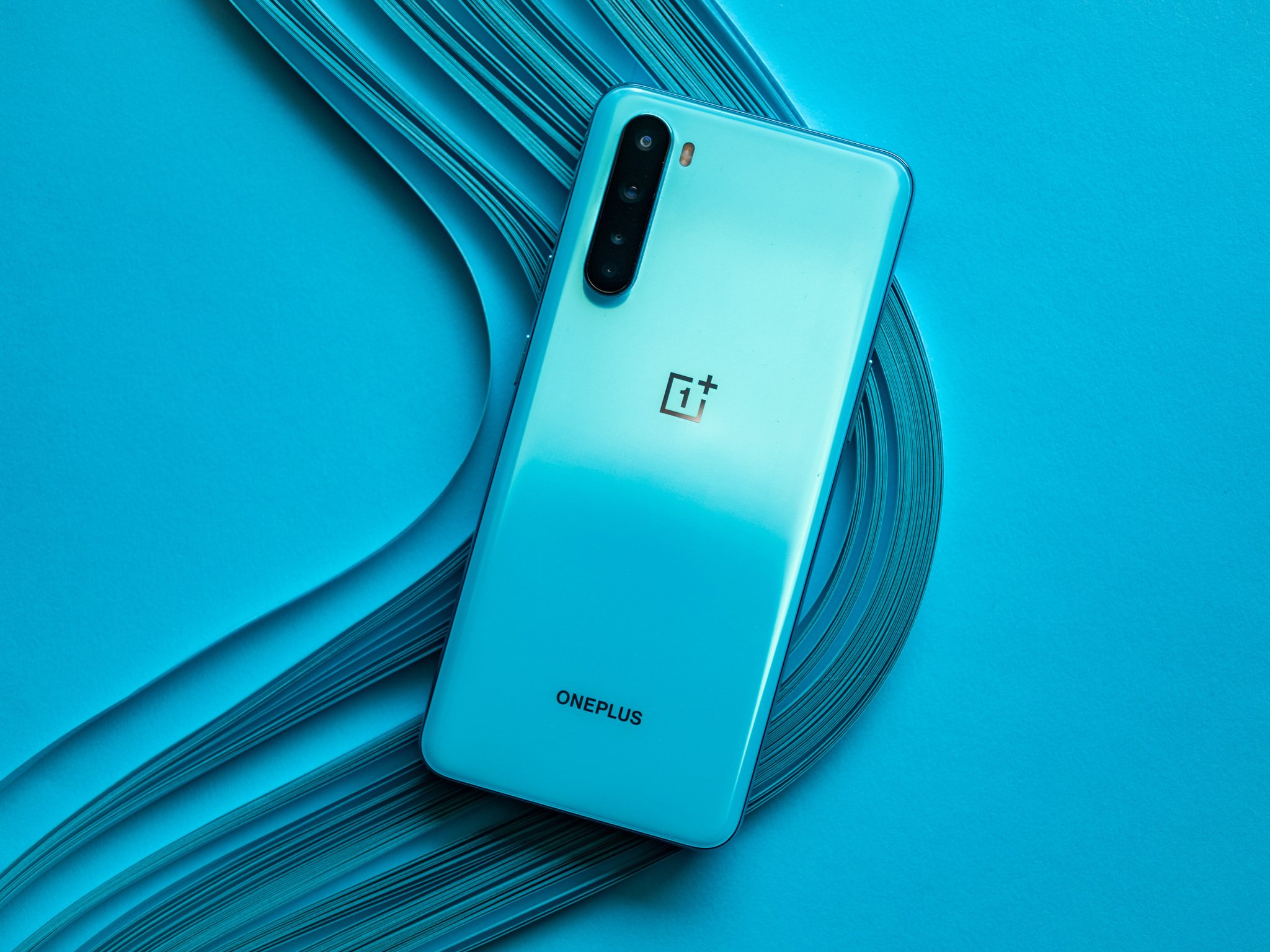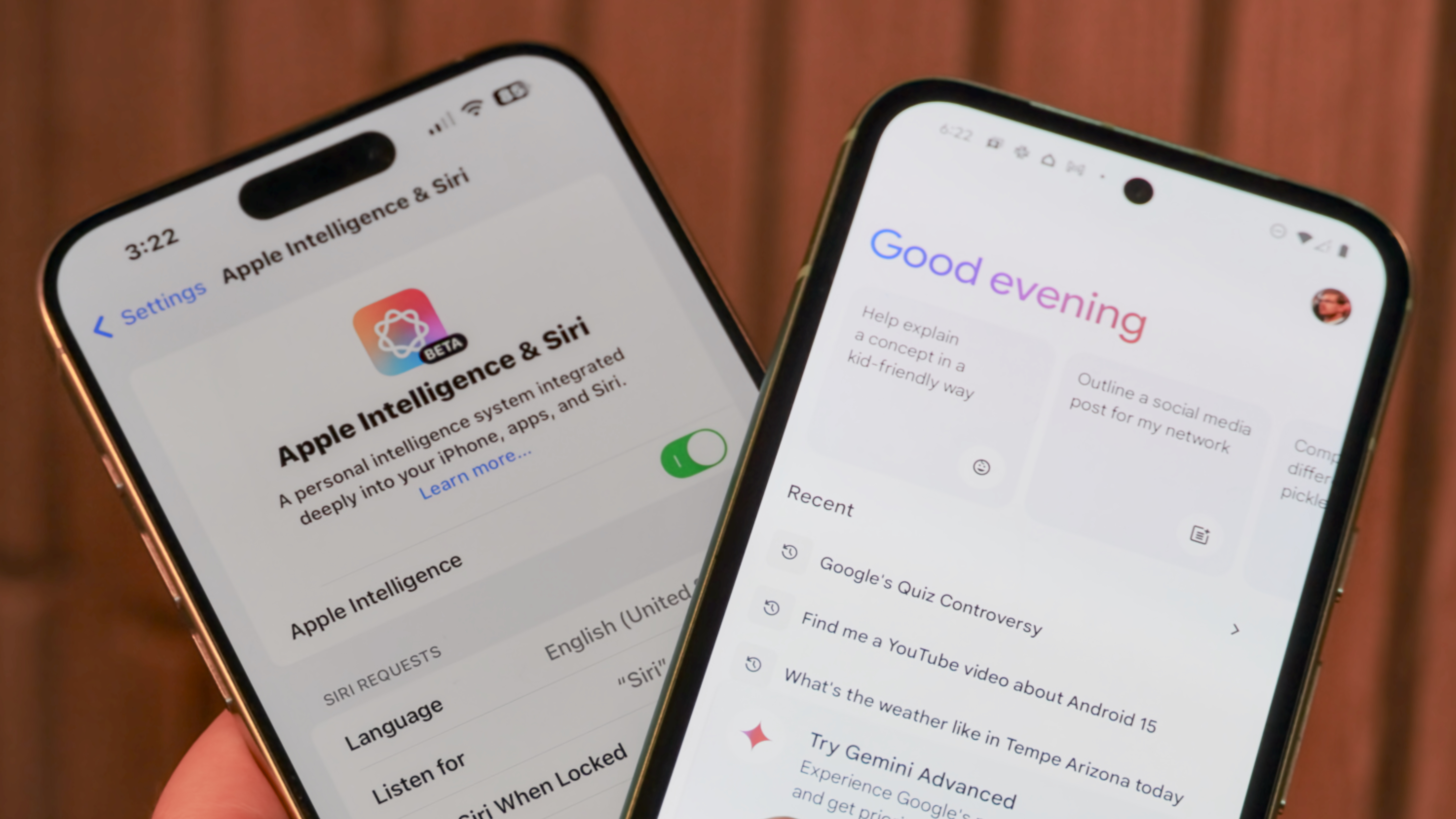Android Central Verdict
Bottom line: The OnePlus Nord ticks all the right boxes: you get a 90Hz AMOLED display, robust hardware, 48MP camera at the back and dual cameras up front, clean software with the promise of timely updates, and 30W fast charging. OnePlus did a fantastic job distilling the essence of its flagships into the Nord, and the result is one of the best mid-range phones available today.
Pros
- +
90Hz AMOLED display
- +
Reliable hardware
- +
Clean software with three years of security updates
- +
Excellent value
- +
Decent 48MP camera
- +
All-day battery life with 30W fast charging
Cons
- -
No 4K at 60fps for the rear camera
- -
Not available in the U.S.
Why you can trust Android Central
OnePlus is at its best in the value segment. The company has made decent strides in challenging Samsung and Google in the high-end category with the likes of the OnePlus 9 and 9 Pro, but the pricing makes them inaccessible to a wide swathe of its audience. That's why it's exciting that OnePlus has a slew of offerings in the mid-range and budget segments with the Nord series.
The Nord delivers all the features that you'd expect from a OnePlus flagship — superb hardware, elegant design, clean software, and a lag-free experience — and it does so for several hundred dollars less than the OnePlus 9, making it one of the best cheap Android phones. With flagships steadily increasing in price, the Nord shows that you can get a comparable experience to $1,000 phones at half the cost.
The hardware itself is obviously great, and you should have no issues with the Nord in day-to-day usage, but the differentiator for OnePlus is the software. With two guaranteed platform updates and three years of security patches, the OnePlus Nord is head and shoulders above most phones in this category.
The Nord is available in India and European markets for the equivalent of $400, but the phone isn't sold in the U.S. That's a shame as the Nord has plenty to offer in this category, but OnePlus hasn't shut the door entirely — the Nord N10 5G and N100 are sold officially in the country, but they miss out in a few key areas.
With the Nord CE 5G and Nord 2 on the horizon, let's take a look at how the original OnePlus Nord holds up in 2021 in this review and whether or not you should still pick it up.
OnePlus Nord Price and availability
The OnePlus Nord was unveiled on July 21, 2020, and the phone went on sale on August 4. The Nord is available in over 30 markets around the world, including India, the UK, Germany, France, and more, but the phone isn't sold in the U.S.
In India, OnePlus offers a 6GB/128GB model that is sold at just ₹24,999 ($335), a considerable bargain over other markets. The regular 8GB/128GB option that's available in most other countries is available for €399 ($450). The Nord is sold in Blue Marble, Grey Onyx, and Grey Ash color variants.
Get the latest news from Android Central, your trusted companion in the world of Android
OnePlus Nord Design
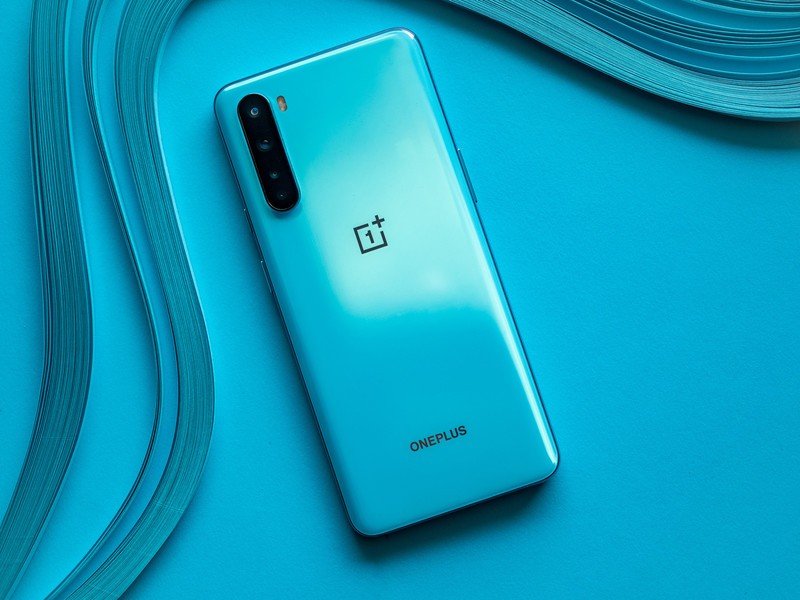
Design has always been a key area of focus for OnePlus. While its phones have gotten bigger and switched to premium materials over the years, the design language itself has stayed consistent. That doesn't mean OnePlus is using the same design here as the OnePlus 3 — the overall aesthetic has changed to stay relevant with the times, but there's a visual identity that ties all of OnePlus' phones together.
That's the case with the Nord as well. The design aesthetic aligns with last year's OnePlus 8 series. Line up the Nord next to the OnePlus 8 and 8 Pro, and the similarities become immediately evident. You get the same flowing curves where the back meets the mid-frame, the same design for the speaker grille at the bottom, and identical positioning of the buttons and the SIM card tray.
The Nord has the same design language as OnePlus flagships, and the in-hand feel is excellent.
The standout on the design front is obviously the stunning blue color option that is the Blue Marble variant. You get a gorgeous cyan hue that immediately catches the eye, and it makes the phone stand out. OnePlus rolled out a lot of attractive designs over the years, and the Nord is right up there with the OnePlus 6 Red and the OnePlus 6T Thunder Purple in terms of visual appeal.
The phone has a glossy finish at the back and is protected by a layer of Gorilla Glass 5 — just like the OnePlus 8 — but when it comes to the mid-frame itself, things are slightly different. The Nord has a plastic mid-frame with a chrome accent that's meant to mimic the feel of metal. The mid-frame is coated with a lighter shade of cyan, and unless you have the OnePlus 8 next to the Nord, you won't be able to make out that the sides are made out of plastic.
Coming to the front, the first thing you notice is the wide camera cutout that houses two sensors. The Nord is the first OnePlus phone to offer two cameras up front, and the cutout takes up a lot of room on the left side. The notch is nowhere near as ungainly as the one on the Pixel 3 XL, and it's easy enough to ignore it after a few days. The bigger deal here is that the Nord has a flat display, making it the only OnePlus phone in 2020 to do so.
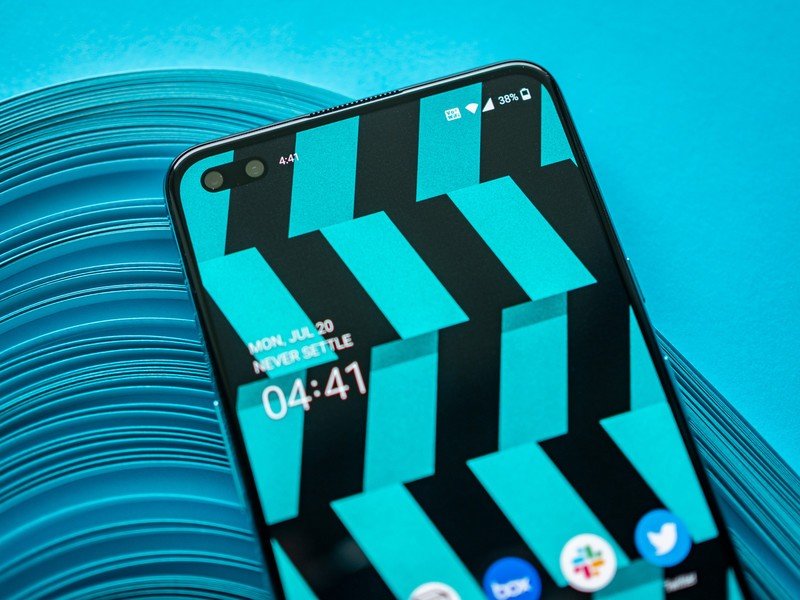
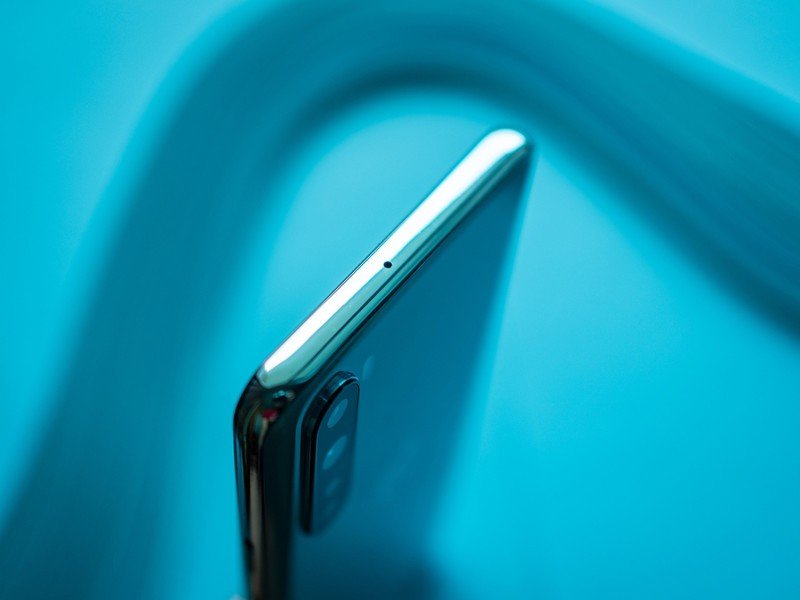



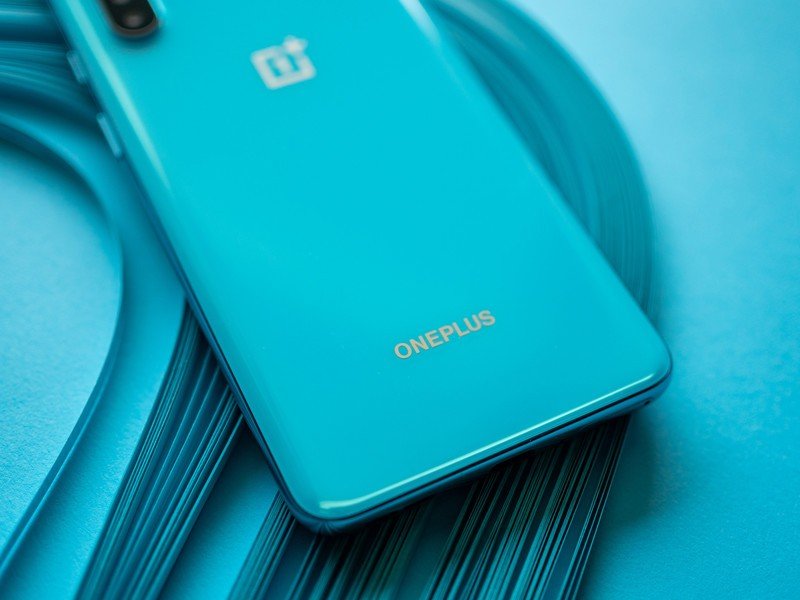


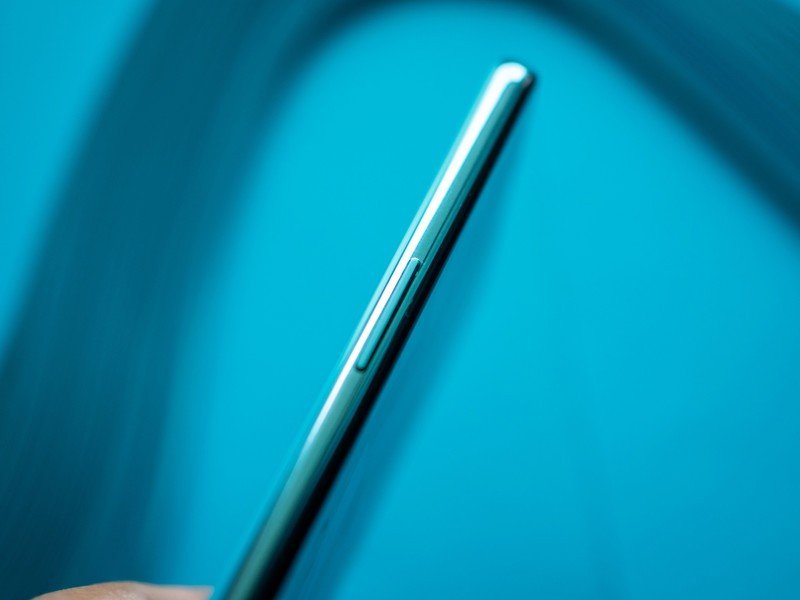
The flat panel makes it significantly easier to use the phone. You get the same thin bezels surrounding the screen, and the phone itself is roughly the same size as the OnePlus 8. It is shorter by 1.9mm, marginally wider, and 0.2mm thicker than the OnePlus 8. It is also heavier at 184g, but the weight distribution is ideal, and you don't necessarily feel the heft.
It doesn't bother me that the Nord has a plastic mid-frame; almost everyone buying the phone will use it with a case anyway, and in that context, it makes sense for OnePlus to save costs by opting for a more affordable material in the construction of the phone. For what it's worth, the power button, alert slider, and volume rocker are made out of metal, with the frame itself fashioned out of plastic.
Talking about the buttons, you'll find the power button and the alert slider on the right and the volume rocker on the left. The single speaker sits to the right of the USB-C charging port at the bottom, and the dual SIM card slot sits to the left. Sound quality from the solitary speaker is decent enough for playing games and streaming content on the device.
The fit and finish here are top-notch, and overall, OnePlus did a magnificent job in retaining its visual identity with the Nord.
OnePlus Nord Display
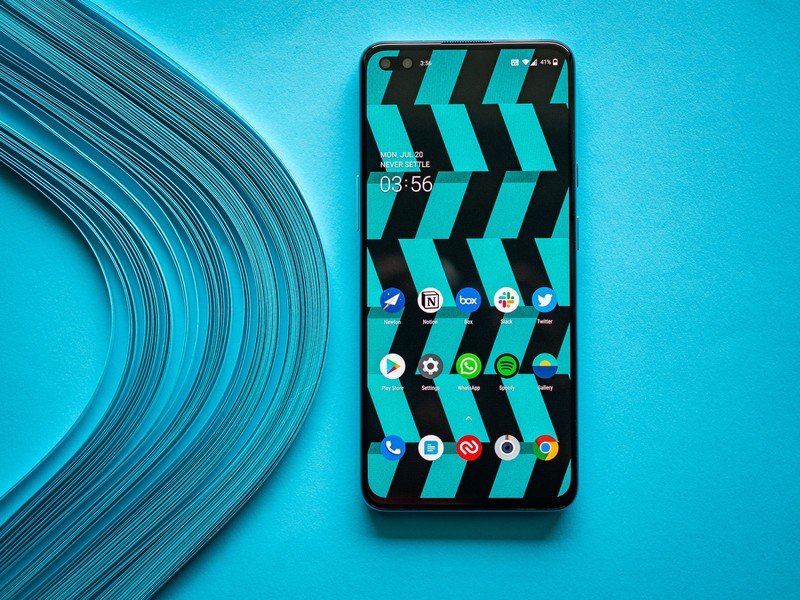
OnePlus was one of the first companies to switch to high refresh rate panels, and the Nord (thankfully) does not miss out in this regard. The phone has a 6.44-inch Fluid AMOLED display with a 90Hz refresh rate — just like the OnePlus 8. The panel also has HDR10+, and the fact that it isn't curved makes it that much more attractive. And like the OnePlus 8, the screen is reinforced by a layer of Gorilla Glass 5.
The 90Hz display on the Nord is just as vibrant and fluid as the OnePlus 8.
I got used to dual-curved panels over the last three years, but there's no mistaking that a flat display is just easier to use. Without the curves jutting out over the mid-frame, you just have more room to hold the phone, and it leads to a better in-hand feel. The panel itself is just as vibrant as the one on the OnePlus 8, with saturated colors and excellent sunlight legibility.
You also get the same level of customization when it comes to adjusting the color balance of the panel, and an ambient display is included as well. OnePlus didn't omit anything here, and that makes the Nord a standout option if you're looking for a phone with a 90Hz refresh rate in this category. POCO and Realme also offer devices with 90Hz or 120Hz panels in this category, so there is an abundance of choice if you want to switch to high refresh rate tech.
With both the OnePlus 8 and 8 Pro offering a curved display, the Nord is your only option if you want to pick up a OnePlus phone with a flat display in 2020.
OnePlus Nord Hardware
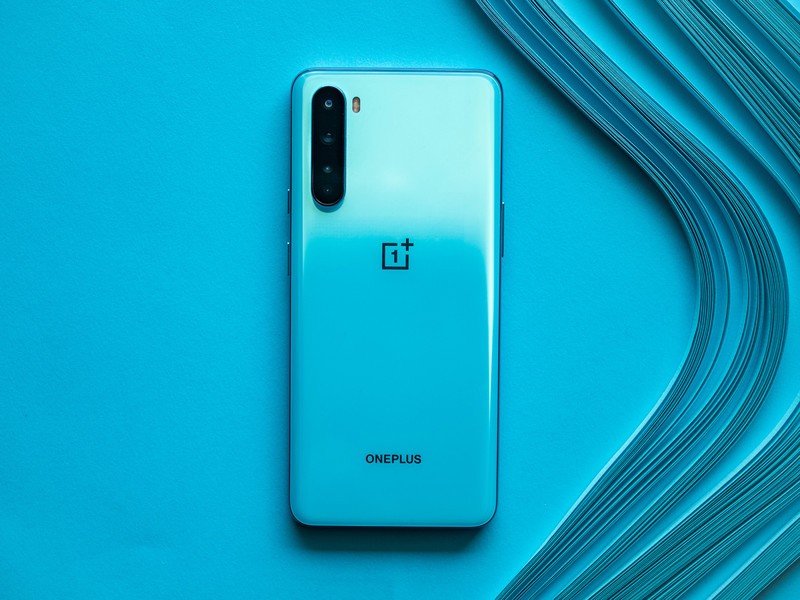
It's always interesting to talk about the hardware on a OnePlus phone, and that takes on an added significance with the Nord. This is the first time OnePlus is using a chipset that's not in the Snapdragon 8xx series, with the Nord instead powered by the Snapdragon 765G platform.
| Specs | OnePlus Nord |
|---|---|
| Software | OxygenOS 11, Android 11 |
| Display | 6.44-inch (2400x1080) 90Hz AMOLED |
| Chipset | 2.40GHz Snapdragon 765G |
| RAM | 6GB/8GB/12GB |
| Storage | 64GB/128GB/256GB |
| Rear Camera 1 | 48MP ƒ/1.75 (primary) |
| Rear Camera 2 | 8MP ƒ/2.2 (wide-angle) |
| Rear Camera 3 | 2MP ƒ/2.4 (macro) |
| Rear Camera 4 | 5MP ƒ/2.4 (portrait) |
| Front Camera 1 | 32MP ƒ/2.4 (primary) |
| Front Camera 2 | 8MP ƒ2.4 (wide-angle) |
| Connectivity | Wi-Fi 802.11 ac, BT 5.1, NFC |
| Battery | 4115mAh, 30W |
| Security | In-screen fingerprint |
| Colors | Blue Marble, Grey Onyx |
| Dimensions | 158.3 x 73.3 x 8.2 mm |
| Weight | 184g |
Let's examine the Snapdragon 765G in more detail. The chipset has eight cores in a 1 + 1 + 6 configuration: there's a single "prime" core based on the Cortex A76 that goes up to 2.4GHz, another A76 core clocked at 2.2GHz, and six Cortex A55 cores at 1.8GHz. How does it measure up to the Snapdragon 865? That particular design has a 1 + 3 + 4 layout with a single A77 core at 2.84GHz, three A77 cores at 2.42GHz, and four A55 cores at 1.8GHz.
The high-level overview tells us that the Snapdragon 765G is aimed more at efficiency and that it misses out on the newer Cortex A77 cores. On the GPU side of things, the 765G comes with the Adreno 620, with the Snapdragon 865 featuring the Adreno 865. The performance on offer with the Cortex cores on the Snapdragon 765G is in line with the Snapdragon 845, and the GPU is equivalent to the Adreno 540-toting Snapdragon 835. If you're interested in learning more, take a look at our Snapdragon 765G performance comparison.
So if you are looking to get the Nord for gaming, now you have a better idea regarding the performance. That said, a lot of the real-world performance is down to optimization, and in that regard, OnePlus did a masterful job. The phone feels just as fluid as the OnePlus 8 in most day-to-day tasks, and the 90Hz panel plays a big role there. You'll only notice the omission of the Snapdragon 865 when playing visually-intensive titles, but in most other scenarios, the Nord is a capable performer.
I didn't see any slowdowns on the Nord, and scrolling through long-form content in Chrome or browsing Instagram and Twitter was just as smooth and lag-free as the OnePlus 8. I confess that I don't play many mobile games, but I tried a few rounds of PUBG with the settings turned up too high, and the Nord did a decent enough job. There was some lag at times, but not enough to pose a problem.
Continuing on the hardware front, the Nord comes in three variants: a 6GB/64GB model that's exclusive to India, an 8GB/128GB version, and a 12GB/256GB option. All three models feature LPDDR4X RAM and UFS 2.1 storage modules as standard, with OnePlus saving costs by not using the latest LPDDR5 or UFS 3.0 tech. You won't see any difference whatsoever between an LPDDR4X and LPDDR5 RAM module, so you're not losing out in this area.
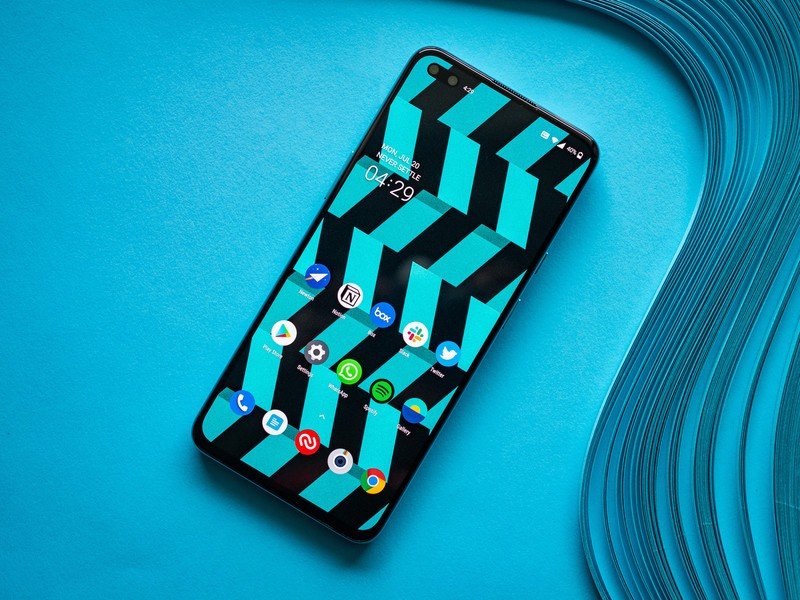
The Nord has a decent in-screen fingerprint module; it's fast to authenticate and reliable in day-to-day use. The vibration motor is better than what we've seen on older OnePlus devices, but you don't get the same sort of feedback as the haptic engine on the OnePlus 8 Pro. And like recent OnePlus phones, the Nord misses out on the 3.5mm jack.
The Snapdragon 765G does an admirable job in daily use, and you're not missing out on much here.
The Snapdragon 765G features a 5G modem, so you do get 5G connectivity with the Nord. The Indian unit has a solitary N78 band, but with commercial 5G unavailable in the country, it isn't a huge omission. It's likely OnePlus was able to cut down on costs further on the Indian unit by not adding more 5G bands, and that could be one of the reasons why the Nord is even more affordable in the country.
The European model has a wider selection of 5G bands — N1/3/7/28/78 —, and it has more LTE bands as well: 1/2/3/4/5/7/8/12/17/18/19/20/26/28/32/34/38/39/40/41/66. So even though the Nord won't be making its way officially to the U.S., if you're keen on trying out the device, the European model is the one to get.
Rounding out the connectivity, you get Wi-Fi ac, Bluetooth 5.1, NFC, VoLTE, Wi-Fi calling (VoWiFi), dual-band GPS, GLONASS, and India's NavIC navigation system. OnePlus has retained the AptX HD, AAC, and LDAC codecs, so you're not really missing out on much with the Nord.
There's no IP rating here, but OnePlus says it tested the phone under 30cm of water for 30 seconds. I unwittingly tested those claims by managing to dunk the Nord in a bucket of water (I don't call myself clumsy for no reason), and while I fished out the phone immediately, water somehow made its way into the camera housing, leading to condensation around the lenses. So while the Nord may withstand the occasional splash of water, it does not do well when submerged in water.
Barring the lack of water resistance, the Nord is a well-rounded device in this category. It delivers all the basics you care about, and for what it costs, you're getting incredible value.
OnePlus Nord Battery life

I'll make this short because the Nord doesn't really have any shortcomings in this area. With a 4115mAh battery, the phone lasts all day without any issues. I averaged screen-on-time of over five hours spread over the course of the day, and the battery always stayed above 15%.
While I didn't venture out of my house and test how the Nord holds up to more demanding tasks like navigation on cellular connectivity, you should still see a day's worth of use. To assuage fears of running out of battery during the day, you get Warp Charge 30T, the same 30W fast charging that's on the OnePlus 8 series. You'll be able to top up the battery from zero to 70% in just 30 minutes, giving you more than enough power for several hours' worth of use.
OnePlus is rolling out the same optimized charging feature that it introduced in the OnePlus 8 series, with the feature designed to prolong the life of your phone's battery. When plugged in overnight, the phone cuts off charge from the wall plug once it hits 80%, and the remaining 20% is charged just before you wake up. This way, your phone isn't just plugged in for most of the night after it's fully charged.
OnePlus Nord Cameras

The OnePlus Nord has six cameras in total — a first for OnePlus. You get four cameras at the back and two at the front. The 48MP primary camera (Sony IMX586) at the back is joined by an 8MP wide-angle lens, 2MP macro module, and 5MP portrait lens. Up front, there's a 32MP primary lens and an 8MP wide-angle module with a 105-degree field of view.
The IMX586 is a stalwart in this category, and like most phones that feature the sensor, the Nord uses pixel binning to produce 12MP shots. You can always take full-res 48MP shots, but the one feature missing this time is 4K video at 60fps. With the Nord aimed at a younger audience, OnePlus is instead offering 4K recording at 60fps for the front cameras, but either module at the front lacks autofocus.
The camera interface itself hasn't changed here, and you get shooting modes laid out in a ribbon. You can easily switch between modes by swiping across, and you get toggles for the timer, flash, full-res 48MP mode, macro mode, filters, and Google Lens. You can easily change the focal length between the wide-angle lens and the primary camera from the viewfinder, and there's also a 2x digital zoom.


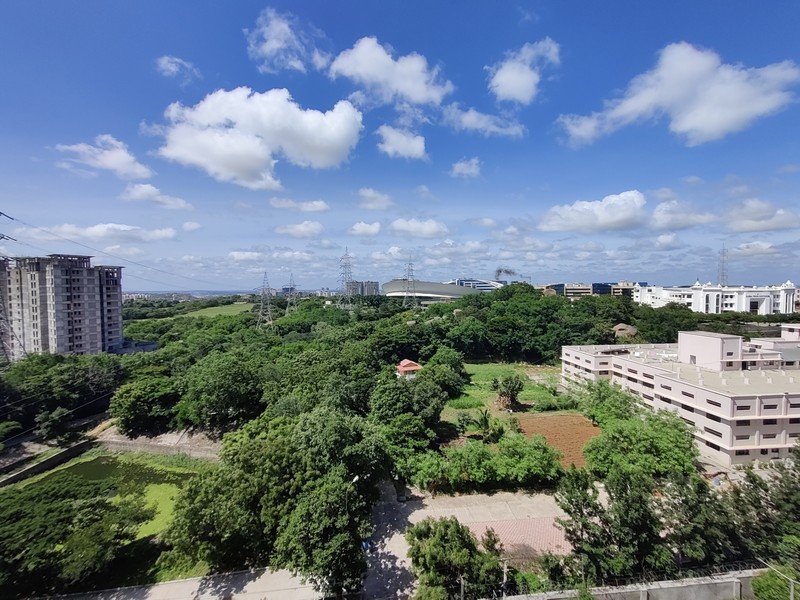
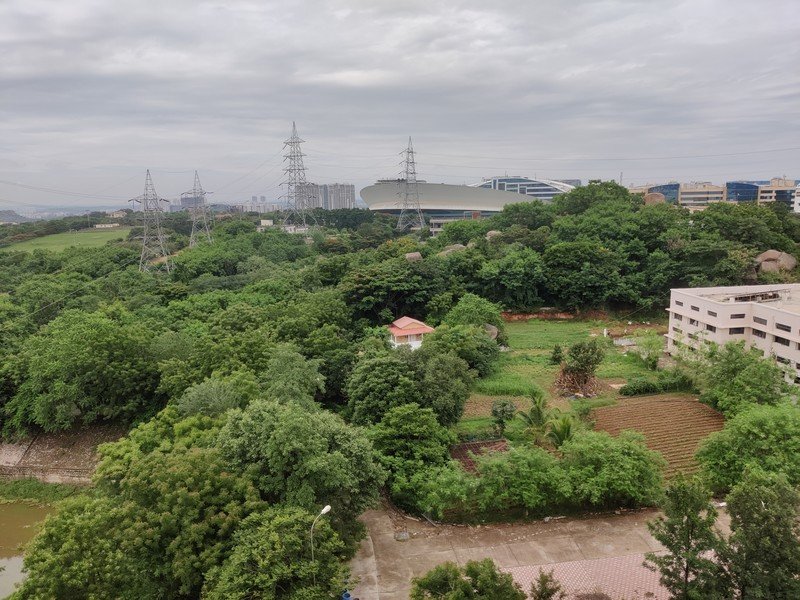

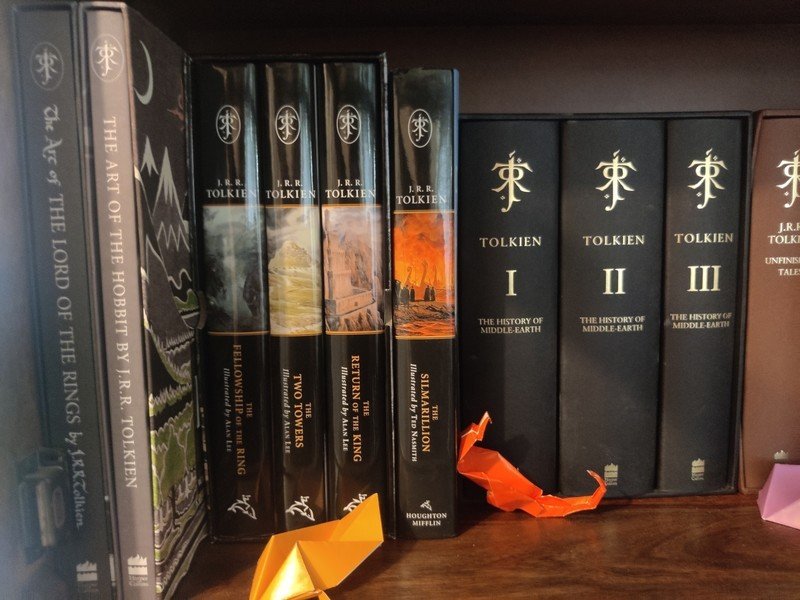
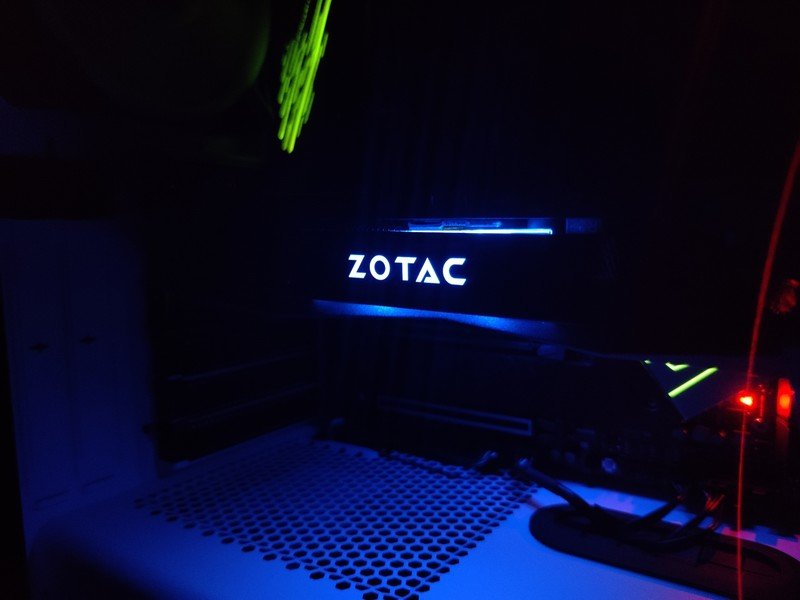
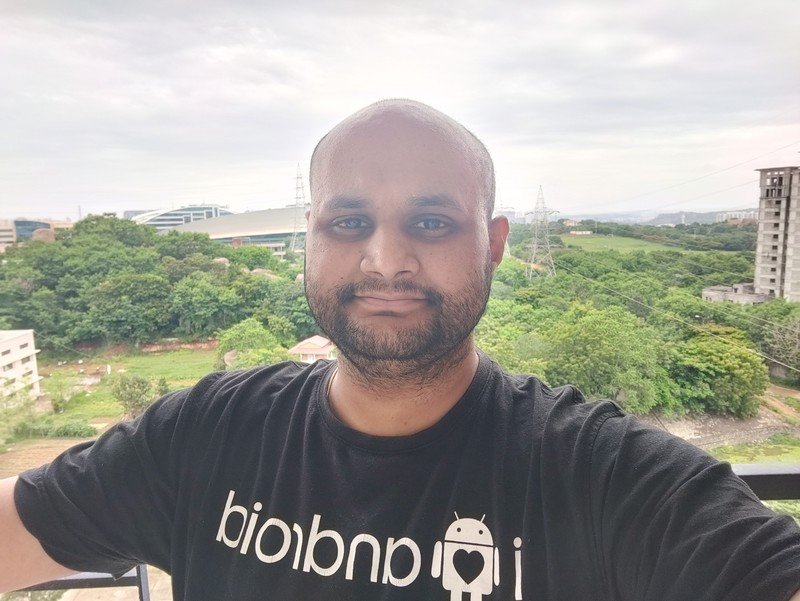

Let's start with the 48MP camera at the back. The IMX586 is the same sensor that OnePlus used in the 7 Pro and 7T last year and the OnePlus 8 this year, so it is a known quantity. What's different is that with the Nord powered by the Snapdragon 765G, there is some variance in the resultant photos as the image signal processor itself isn't on par with what you get on Qualcomm's flagship designs.
The Nord is capable of taking good photos, but it needs further tuning.
The Nord takes decent enough photos in daylight, with great dynamic range and lots of detail. But there's noticeable grain around the edges even in well-lit conditions, and the resultant shots tend to be on the softer side, particularly when taking photos of foliage.
The camera is passable in low-light, but once again, there's a lot of noise and limited detail from shadows. The dedicated night mode does a better job eking out more detail from low-light shots, and it's clear that the camera needs further tuning. The 8MP wide-angle lens does a good job retaining the same color profile as the primary lens, but you do get some distortion around the edges.
The 5MP portrait lens also does a decent job isolating the subjects from the background, but the 2MP macro lens is just not worth the hassle. It's evident that the lens is there purely for marketing reasons and should not have been included at all.
The 32MP camera at the front holds up pretty well in daylight scenarios, but there's aggressive smoothing going on even when the beautification effects are disabled. The wide-angle lens at the front is a welcome addition, but it also has the same drawback.
There are far too few phones with wide-angle lenses at the front, and while there is potential here, it is being held back by software. OnePlus rolled out several fixes addressing the camera on the Nord, and it now takes better photos than at launch. But the wide-angle lens at the front is still limited, and 10 months after its release, the issues haven't been fixed.
OnePlus Nord Software

One of the best parts about a OnePlus phone is the software, and in that regard, the Chinese manufacturer is in a league of its own. OxygenOS continues to deliver meaningful features without making the interface itself feel cluttered. The Nord launched with OxygenOS 10.5 based on Android 10 out of the box, and it made the switch to OxygenOS 11 with the Android 11 update back in March 2020.
OnePlus has committed to two platform updates and three years of security updates, and that's a big deal when you consider just how many phones in this category don't see even quarterly security updates and more than a solitary platform update. OnePlus says it will roll out security updates once every two months, and it has managed to do that consistently.
There's no bloatware here, and I like the balance that you get with OxygenOS. The skin is equally suited to novice and power users; you don't need to tinker with any settings to use the phone out of the box, but if you're interested in customization, there are a lot of powerful options on offer. Of course, with OxygenOS 11, the big change is the new design, and while it takes a while to get used to the customization, it largely gets out of the way.
OxygenOS delivers meaningful features without adding any bloatware.
OxygenOS 11 comes with a slate of new features, including schedulable dark mode, always-on display, changes to the settings page, customizable gestures, new modes within Zen Mode, and automatic highlights in the Gallery.
Interestingly, the Nord comes with Google's dialer and Messages instead of OnePlus' own offerings. OnePlus says it expects a lot of first-time buyers because of the positioning of the Nord and that it felt that they would be more comfortable using Google's own communications suite. You can't install OnePlus' phone and messaging apps on the device even if you want to do so, and it's puzzling to see OnePlus take this direction considering all the features it added to its messaging service last year.
OnePlus took a leaf out of Microsoft's playbook and added a similar set of features as the excellent SMS Organizer into its own messaging app, so it is a letdown that the app isn't available on the Nord. And while you don't find OnePlus' communications suite on the phone, you do get the company's take on cloud storage. You'll be able to back up photos and videos from the Nord using OnePlus' Cloud Service, and right now, the feature is limited to Indian users. OnePlus uses India as a test-bed for its latest features, and it is giving away 50GB of storage for free to incentivize users.
OnePlus Nord Competition

The obvious challenger to the Nord is the Samsung Galaxy A52. Samsung's mid-ranger offers 5G connectivity along with a 90Hz AMOLED panel, reliable hardware, IP67 water resistance, and outstanding battery life. What's particularly interesting is that Samsung will deliver three platform updates and four years of security patches, outmatching OnePlus.
The Pixel 4a is also a strong contender in 2021. The phone offers a flagship camera in the mid-range segment, and it continues to be the sub-$400 phone to beat right now in the U.S. The Pixel 4a doesn't have the same level of hardware as the Nord, but the camera is in a league of its own.
Of course, there's also the $399 iPhone SE to consider. Powered by the A13 Bionic and with at least four years of software updates, the phone has a lot to offer — provided you're willing to switch to iOS.
OnePlus Nord Should you buy it?
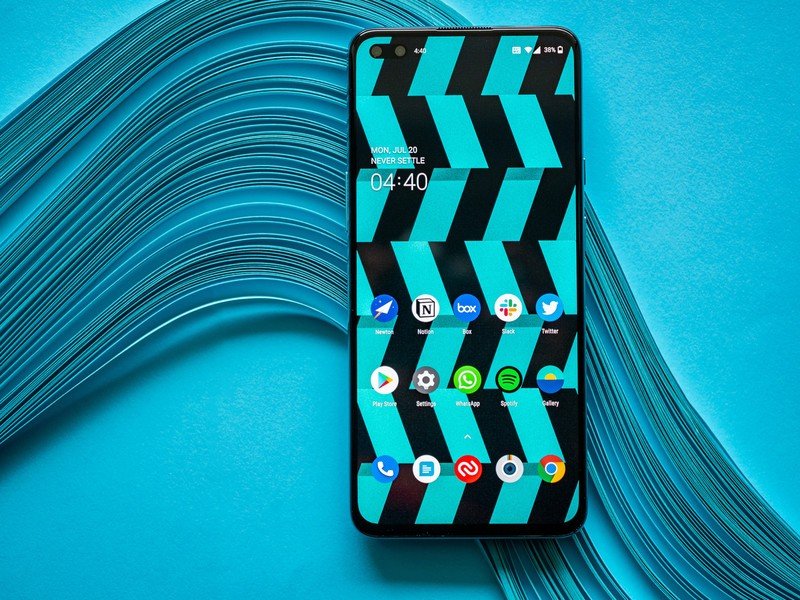
You should buy this if ...
- You're looking for a feature-rich phone that has great value
- You want to use a 90Hz AMOLED panel for under $500
- You need lag-free performance in day-to-day use
- You need a phone with clean software and timely security updates
- You're in the market for decent cameras
You shouldn't buy this if ...
- You need the absolute latest hardware for gaming
- You're looking for water resistance and wireless charging
What OnePlus has managed to achieve with the Nord is commendable. You don't miss out on any of the core features that make OnePlus' flagships stand out, and that makes the Nord a particularly great option if you're looking to buy a phone for under $500 in 2021.
Ultimately, it's the software that makes the Nord stand out in this category.
The 90Hz AMOLED display is sublime, the hardware is reliable, the 48MP camera at the back is decent enough for this segment, and the dual 32MP + 8MP cameras at the front are a welcome addition. Combine that with all-day battery life and 30W wired charging, and you get a great overall product. It's easy to just focus on the hardware here and say that the OnePlus Nord offers excellent value, but the software is the bigger deal here.
You can get robust hardware on just about every phone in this category now, but bloat-free software with regular updates and no bloatware? You'll find that only on Pixels and the iPhone SE, and now the Nord.
As the Nord borrows a lot of the core features from the OnePlus 8, you ultimately get a device that delivers 90% of the same features at 60% of the cost. You can now buy the OnePlus Nord in India and European countries. The 8GB/128GB option costs £379 ($480) in the UK, €399 ($450) in Europe, and ₹27,999 ($375) in India.
4.5 out of 5
The 12GB/256GB model is £469 ($595) in the UK, €499 ($570) in Europe, and ₹29,999 ($400) in India. There's also a 6GB/64GB option that's exclusive to India, and that model is available for just ₹24,999 ($335)on Amazon India.
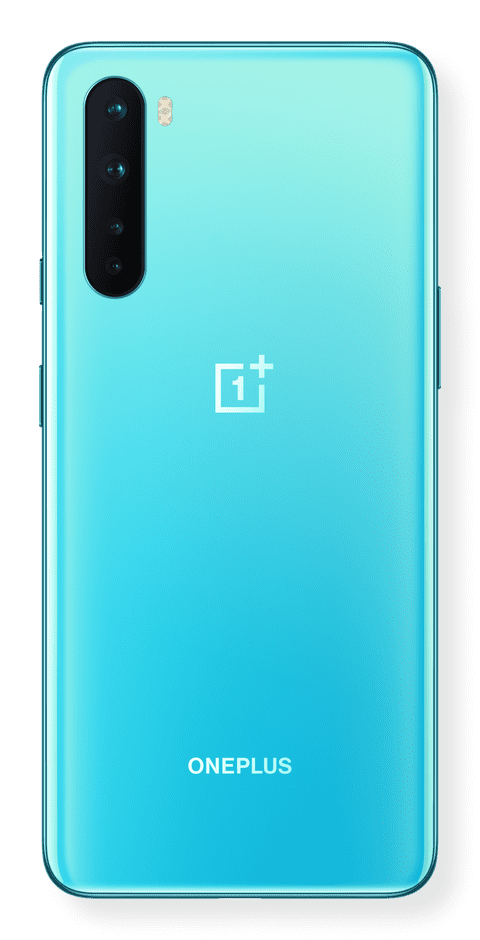
The most feature-rich mid-range phone
The OnePlus Nord ticks all the right boxes: you get a 90Hz AMOLED display, robust hardware, a 48MP camera at the back and dual cameras up front, clean software with the promise of timely updates, and 30W fast charging. OnePlus did a fantastic job distilling the essence of its flagships into the Nord, and the result is one of the best mid-range phones available today.
OnePlus Nord Changelog, June 2021
This review was initially published on July 20, 2020, and was updated on June 1, 2021, with the following changes:
- Added mentions of the OnePlus 9 series and the upcoming launch of Nord CE and Nord 2
- Included details of new features in OxygenOS 11
- Added Galaxy A52 as the primary rival for the Nord in 2021
- Added long-term usage notes following availability of OxygenOS 11
OnePlus Nord 10-month later review

I used the Nord on and off for several months last year and switched to it for a week once the stable OxygenOS 11 update rolled out. The hardware itself holds up just fine in 2021; I didn't notice any slowdowns or lag in day-to-day tasks with the Nord.
The 90Hz AMOLED panel continues to be the strong point for the Nord, delivering excellent colors and vibrancy. With the phone sharing a foundation with the likes of the OnePlus 8, there's nothing really missing out on the hardware side of things, and that continues to be the case in 2021. I still don't have any issues with battery life, and although OnePlus has switched to 65W charging for its flagships, Warp Charge 30 feels more than adequate.
The Nord still has plenty to offer in 2021, but you should wait for the Nord CE and Nord 2.
The biggest talking point for the Nord in 2021 has to be the software. With OxygenOS 11, OnePlus is continuing to assert more influence on the design, and that is only set to continue later this year with OxygenOS 12. So while the changes to the software are divisive and will potentially alienate a section of OnePlus' userbase, the overt styling is limited to a few first-party apps, so it is easy enough to ignore (or so I tell myself).
But what made OxygenOS stand out in the first place is still unchanged: customizability. You get a host of options to tweak and tailor the phone to your tastes, and that thankfully will not go away in the coming iterations of OxygenOS.
My only issue with the Nord is the cameras. Mid-range cameras have come a long way in the last 12 months, and the phone doesn't quite measure up to its rivals in this particular area. The Nord has a few too many cameras, with OnePlus clearly going after quantity in lieu of quality. That's one of the reasons I'm excited for the Nord 2; it will be OnePlus' first phone with a MediaTek chipset, and it should deliver decent upgrades on the camera front as well.
Then there's the Nord CE 5G, and looking at the hardware, it looks like it will be on par with the Nord. So if you're in the market for a mid-range phone in 2021, you may as well wait for the Nord CE and Nord 2 to debut to see what they bring to the table. If nothing else, the first-gen Nord should pick up a decent discount following the launch of these models, paving the way for greater value.

Harish Jonnalagadda is Android Central's Senior Editor overseeing mobile coverage. In his current role, he leads the site's coverage of Chinese phone brands, networking products, and AV gear. He has been testing phones for over a decade, and has extensive experience in mobile hardware and the global semiconductor industry. Contact him on Twitter at @chunkynerd.
